In our previous post we met Paul-Louis Courier (1772-1825), an accomplished Hellenist and a brilliant writer of political pamphlets. He was a sharp thorn in the side of the authorities, especially during the last decade of his life when he fearlessly attacked the abuses of the church and the state during the Restoration. He was also a difficult personality, said to be harsh to his employees and neglectful of his wife. He was murdered in the Forest of Larçay, about four kilometers west of his home at La Chavonnière. No one was ever convicted of the crime, but a central question remains: was the murder a domestic affair involving angry servants, or a political assassination? This post will examine both possibilities.
Biking from Véretz to Tours, 20 km
Our route takes us from Place Paul-Louis Courier looking out on the Cher River at Véretz; to the town cemetery, where Courier and his first son are buried; to the monument in his honor in the Forêt de Larçay; to the inn where his murder was plotted; to a cafe in Saint-Avertin; and then to the Tours station. To see our route, click here.
Particularly after the publication in 1821 of his Simple Statement (as described in our previous post), Courier was anathema to the French authorities. He was harassed, spied upon, and imprisoned. Fifty years later, with the advent of the Third Republic, the division of church and state envisaged in the Revolution of 1789 was gradually brought into effect, and Courier’s standing among civil authorities rose.
In 1871 the old Paris city hall (Hotel de Ville) was burned down during the Commune. A decade later a new city hall was opened, featuring on its facade statues of 79 great French writers, artists, and scientists.[1] Among them is Paul-Louis Courier, honored as a both a erudite scholar and an extraordinary pamphleteer. In the photograph of the statue below, Courier holds a quill in his right hand across his breast, as if swearing fidelity to the truth. In his left hand is what might be the cover page of his great Simple Discours pamphlet.
In preparing this post and the previous one, I was greatly aided by M. Jean-Pierre Lautman, the Secretary-General for the Society of Friends of Paul-Louis Courier (Société des amis de Paul-Louis Courier) and the author of an outstanding biography of the writer: Paul-Louis Courier, ou la plume indomptée (C.L.D., 2001). On the title page, M. Lautman includes a citation from Albert Camus which sums up beautifully why a great scholar like Courier would also become a brilliant writer of popular political pamphlets:
“Everything which degrades culture shortens the road which leads to servitude.” (Tout ce qui dégrade la culture raccourcit le chemin qui méne à la servitude.)
I met for two fascinating hours with M. Lautman at his home in Saint-Avertin. Two days later, at his invitation I attended a soirée littéraire at the Chateau de Cangé in Saint-Avertin, entitled Paul Louis Courier, épistolier. The soirée was led by M. Lautman and featured readings from Courier’s letters during the years (1793-1809) that he served in the army. The invitation came from the Mayor of Saint-Avertin and the first Associate Mayor (1ère adjointe), responsible for culture. The commitment of the relatively small towns of Touraine (Saint-Avertin has a population of 15,000) to preserve their cultural heritage is truly inspiring.
While I am thanking M. Lautman, it is probably a good time to thank the many good people of Touraine who have helped me in my efforts to write this blog. There was the curator at a special exhibit on da Vinci at the Clos-Lucé who guided me through the master’s plans to construct a royal palace for François I at Romorantin and to build canals in the area around the proposed palace; the teacher who found me lost on the plateau above Véretz and guided me to the Place Paul-Louis Courier; and countless others.
On my first bike trip on the route we travel today, I found myself wandering about, unsure of which direction to go. An elderly lady, I’ll call her Hélène, opened a window on the ground floor of her home, leaned out, and asked me if she could help. We chatted a bit about who I was and what I was doing there, and then she gave my very precise directions to my next stop. I offer warmest thanks to all the Hélènes who have guided me in the past and will do so in the future.
Back to our bikes: we leave Véretz going south on the rue Chaude, passing the Véretz church, where the elderly priest in Courier’s day enjoyed watching young people dance on Sunday afternoon, unlike the priest at Azay-sur-Cher, who forbade such dancing, drawing forth a brilliant pamphlet from Courier which we discussed in the previous post. Like the church at Azay-sur-Cher, the massive base of the bell tower is the oldest part of the Véretz church, dating from the 12th century. Much of the current church was built in the early 15th century.
Continuing south on the rue Chaude, we soon arrive at the cemetery where Paul-Louis Courier and his first son, Paul-Etienne Courier, are buried, side by side. His son was born on September 30, 1820, the day after the birth of the miracle child (“l’enfant du miracle”), the duc de Bordeaux, in line to be King Henry V. As we saw in last week’s post, in his Simple Statement pamphlet Courier furiously denounced the proposal to buy the Chateau de Chambord for the infant prétendant with a public subscription: was his anger increased by difference in expectations for his own son, born at the same time?
Courier had two sons with his wife Herminie: the second, Louis-Esther, was born in October, 1824, six months before Courier’s death. There was by now a clear estrangement between man and wife. The following January, over Courier’s objections, Herminie left to live in Paris with her mother, taking Paul-Etienne with her and leaving Louis-Esther with a local nurse. The estrangement, and the fact that she remarried after Courier’s death, explains why she does not lie with him in the Véretz cemetery.
The estrangement also led some to believe Herminie was involved in her husband’s death. When they married in 1814 he was 42 and she had just turned 19. During the five years before Courier’s death in 1825, his frequent absences in Paris and his apparent neglect of Herminie even when he was at home at La Chavonnière, led to her infidelity with one of the servants, Pierre Dubois.
Yet Herminie had no apparent motive for the murder. When Courier was killed she was living comfortably with her mother in Paris and certainly had no desire to return to La Chavonnière on her own. The inheritance laws of the day provided her no financial incentive for her husband’s death. M. Lautman has suggested that the efforts to link Herminie to the murder arise from a desire by Courier’s critics to sully his reputation and turn attention away from the possibility that his death was organized for political reasons.
Leaving the cemetery, we head south and then east, crossing the TGV line from Paris (the same TGV line we saw two weeks ago in the first photograph of A Kidnapping at the Chateau. We then turn south, cross the TGV line again, and enter two lovely forests on unpaved paths, first the Bois des Hâtes and then the Forest of Larçay (la Forêt de Larçay).
We head south on the Allée Paul-Louis Courier and come to the monument erected in his honor by Herminie in 1828 on the site of his murder. She had the following words engraved on the stone:[2]
To the memory of Paul-Louis Courier murdered at this place on April 10, 1825. While his earthly remains lie in Véretz, it was here that his last thought joined eternity.
During the occupation of France in World War II the Germans had soldiers in the Forest of Larçay. The resistance had distributed some of Courier’s pamphlets, which speak of courage in the face of oppression. Apparently the Germans did not like the message, and a German soldier fired his machine gun on the monument to Courier. The damage was repaired by the City of Tours after the war.
So who murdered Paul-Louis Courier and why? Following his death there were two trials. In the first, Courier’s gamekeeper, Louis Frémont, was accused, and found not guilty in September, 1825. Four years late a young shepherdess, Sylvine Grivault, accused a group of servants from la Chavonnière of having planned the crime, including Frémont, Pierre Dubois (Herminie’s former lover), and Pierre’s brother Symphorien, who had died in 1827.
During the trial Frémont admitted that he had fired the lethal shot; he was protected by double jeopardy, however, since he had been acquitted in the first trial. All the other defendants were found not guilty by the jury on June 14, 1830, after just one-half hour of deliberation. While the civil authorities condemned Frémont to a fine of 10,000 francs, he died just five days after the verdict in a hospital in Tours on June 19.[3]
Was there a political connection to the murder? M. Lautman believes there is evidence to that effect, although it is not conclusive.[4] While he is careful to hold the King, Charles X, blameless of the crime, he believes that it is unthinkable that the police services, who spied on Courier and had an informer in his household, were not aware of the planned crime before it happened. And why would Frémont take the enormous risk of a murder which could benefit him little, unless he knew in advance that the police would look after him and the authorities would prevent a conviction? These questions, alas, must remain unanswered unless new evidence arrives.
Murder in the forest, an unfaithful wife, political intrigue: sounds like another novel for Balzac.[5] It was. Balzac visited Touraine in 1824 and 1825 and knew one of the lawyers involved in the case.[6] Although set in the Bourgogne region, rather than in Touraine, his novel The Peasants has a story line with elements in common with Courier’s experience, or at least the popular understanding thereof.
In Balzac’s tale, the Count of Montcornet, a general in the French army, is the owner of an estate, and hated by his servants for his rough treatment of them. His wife is unfaithful to him, although with a journalist, not a field hand. The inn at Le Chêne Perdu, where the Courier’s unhappy peasants gathered, has its parallel in the cafe “Grand-I-Vert” in the novel.
But Balzac’s Count is not murdered by the peasants; instead they murder the Count’s faithful warden, Michaud. Arrayed against the Count are powerful political and financial interests, who eventually force him to give up his property. There is perhaps an echo here of the powerful interests arrayed against Courier. In any case, Balzac’s novel reeks of political intrigue and corruption of the sort which Courier denounced in his writings.
The TV series, La caméra explore the temps, which we first met two weeks ago in A Kidnapping at the Chateau, did a program entitled L’étrange mort de Paul-Louis Courier. The tensions between Courier and his servants, and Courier and Herminie, are brought out clearly, and Herminie’s infidelity is explicitly portrayed. The political hostility to Courier is evident, and in the police investigation of the murder we see the desire of senior police to eliminate any facts which point toward political involvement. The movie, like M. Lautman’s book, leaves us with a suspicion of political engagement in the murder, but no proof.
A year after Courier’s death, the great novelist Stendhal paid tribute to him:
“Voltaire was a courtier while Paul-Louis Courier was an honest man. From this angle he resembles Franklin. M. Courier was remarkable for his courage, which can explain both his murder and the failure to convict the murderer … The last of our great writers.”[7]
By “honest man” Stendhal means that Courier spoke the truth to power in his day, and did not seek to win favor with those who held sway over an unjust society. His courage may explain his murder: those in power may have taken revenge on a man who challenged their authority.
It is time to get back on our bikes and continue through the Forest of Larçay. At the south end of the Allée Paul-Louis Courier a short detour east takes us around a small lake in the forest, with lovely views.
Heading east we come to a cluster of buildings in a district still called Le Chêne Perdu. The building which housed the auberge where Courier’s conspiring peasants and servants met is still standing.
We pedal the 11 km back to Tours. Our route heads north, over the TGV line we have crossed twice today already, and through some lovely rural country with horse farms. As we head down the hill to the Cher, we approach the Saint-Avertin city hall. Almost next door is a convenient rest stop, Le Saint-Avertin Bar.[8] Nearby is a small lake in the flood plain of the Cher.
In the photograph we are looking east. On our left is an island which serves as a public park. On the horizon is a levee, beyond which is the Cher River. Behind the trees on the right is the Clapotis restaurant, with tables looking out on the lake, where Josette and I have shared many a fine meal with family and friends.
Our route back to Tours takes us west to the Sanitas Bridge, where we cross the Cher and continue north to our final stop, the Tours train station.
Photograph 1 is from the Wiki Gallery, wiki.gallery.org. Photograph 2 is from the City of Paris website, paris.fr. All other photographs were taken by the author.
[1] Of the 79, three are women, which is rather like their representation in the Pantheon, completed eight decades earlier, but still accepting new members.
[2] “A la mémoire de Paul-Louis Courier assassiné en cet endroit le 10 avril 1825. Sa dépouille mortelle repose à Véretz mais ici sa dernière pensée a rejoint l’éternité.”
[3] For a compelling account of the two trials, see Jean-Pierre Lautman, Paul-Louis Courier, ou la plume indomptée (C.L.D., 2001), pp. 229-237.
[4] Lautman, pp. 237-240.
[5] Another novel, following A Murky Business (Une Ténébreuse Affaire, 1841) based on the Clement de Ries kidnapping, which we learned about two weeks ago in A Kidnapping at the Chateau. The Peasants (Les Paysans) was published in 1856, after Balzac’s death.
[6] Véretz: Paul-Louis Courier, http://www.bude-orleans.org/lespages/44centr/37/veretz.html.
[7] “Voltaire était un courtisan tandis que Paul-Louis Courier était un honnête homme. Sous ce rapport, il ressemblait à Franklin. M. Courier était remarquable par son courage, ce qui explique assez son assassinat et le non-lieu de son assassin … Le dernier de nos grands écrivains.” Cited in Alan Dejammet, Paul-Louis Courier (Fayard, 2009), p. 9.
[8] Le Saint-Avertin Bar, 15 rue Rochepinard, 02 47 27 06 17.

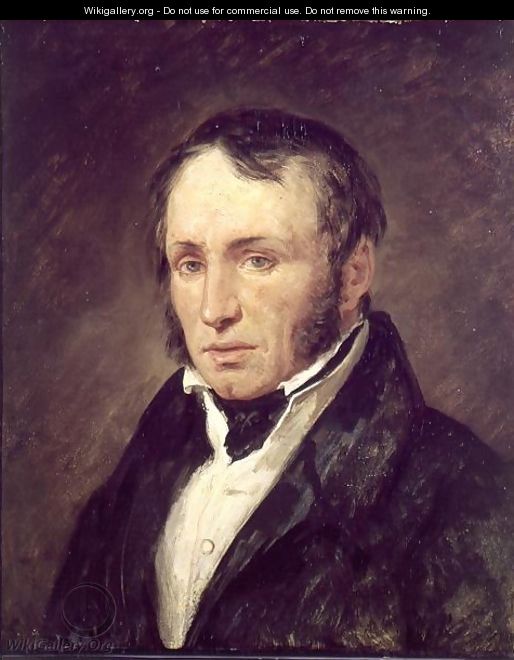
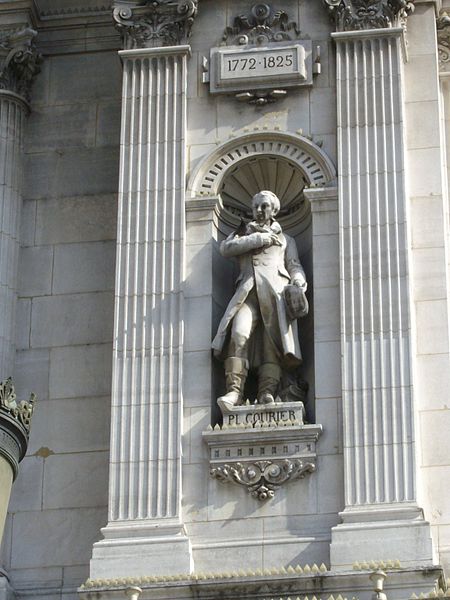
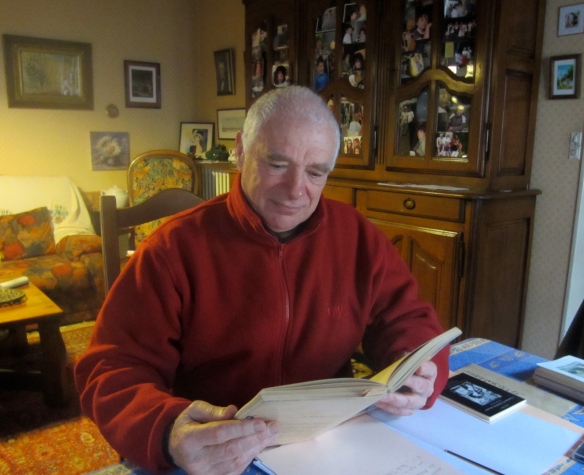
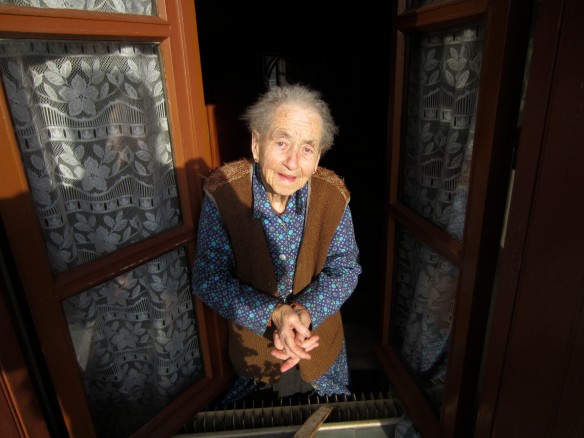



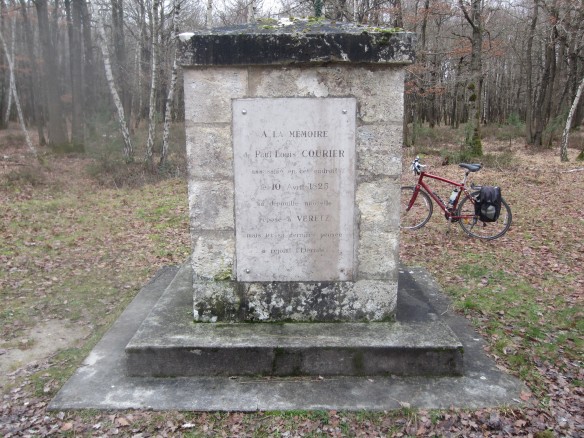
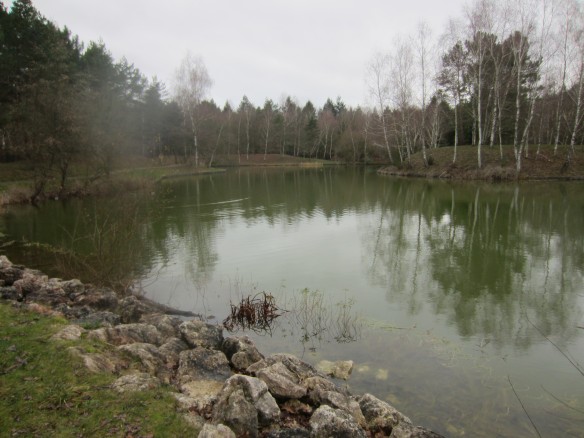
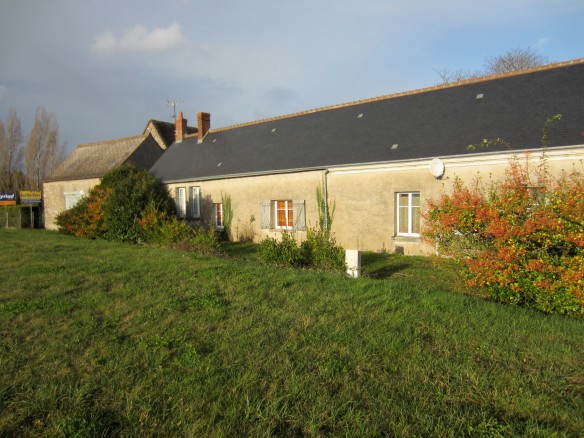

I loved reading your blog today, Paul. I enjoyed the historical accounts in this and previous posts, the photos (including that of kind “Helene” who helped you on your way), and also the reminders of my own undergrad French literature studies of long ago! My best to you and Josette,
Helena
http://myprimetimes.blogspot.ca/